Le interim management is a concrete response to the transformation challenges facing companies. To remain competitive, relevant and value-creating, companies need to cultivate a constant capacity to evolve. Companies that rest on their laurels risk becoming obsolete, while those that adapt gain in performance. Successfully supporting change is therefore no longer an option: it is an essential condition for their long-term survival. Julie Garnier, certified coach and trainer.

Against a backdrop of accelerating technological change, far-reaching organisational transformations and growing environmental and societal pressures, organisations need to adapt if they are to remain successful. But this dynamic of change is often accompanied by resistance: team fatigue, emotional wear and tear, loss of reference points and doubts about their ability to evolve.
70 % of change initiatives fail because of ineffective change management.
Change Management Toolkit from the University of Berkeley
Calling on the services of an interim manager can increase the likelihood of successful change management.
The benefits of interim management in an ever-changing world
Interim management involves temporarily entrust leading a strategic project or managing a complex situation an experienced external manager. In particular, he or she is involved in digital, environmental or organisational transition, or change of scale. They coordinate and cooperate with internal teams.
The benefits of an interim manager
- Immediate operationality
- Tailored expertise
- Neutrality and an external viewpoint
- A fresh look promoting openness
- Quickly visible results
- Timed intervention
- Improving overall performance: economic, financial and operational
Interim management: key figures
65 % of interim managers have already completed at least one assignment.
In 73 % clients have already used interim management.
Types of assignment

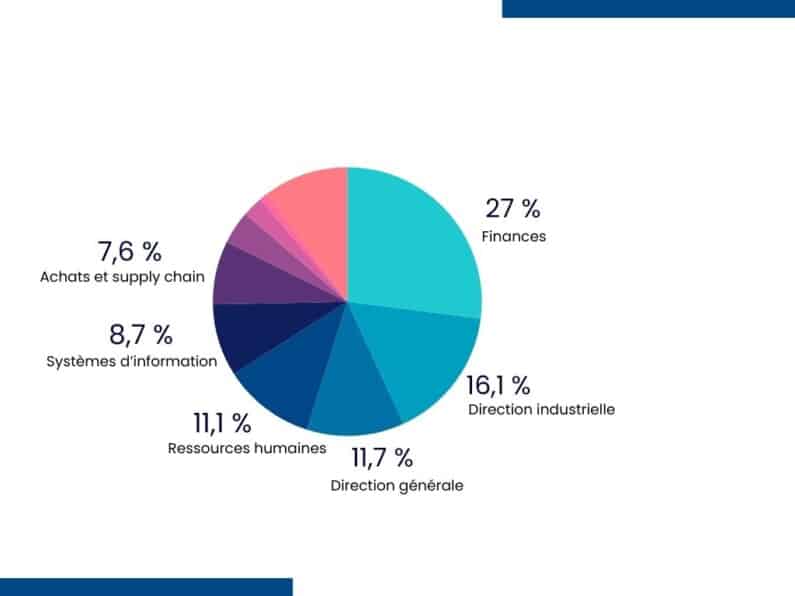
In 2024, 1 in 5 assignments concerned change management (+7 % compared with 2023).
Interim management clients and their sectoral breakdown


Source: France Transition - Barometer of interim management companies for 2024.
Concrete example of an interim management assignment
In a financial services company with around 600 employees, an interim manager was appointed to support the teams in integrating artificial intelligence into their business processes.
The aim of her six-month assignment was to facilitate the adoption of AI tools, while maintaining the commitment, motivation and cohesion of the teams.
To achieve this, it has set up participative workshops.
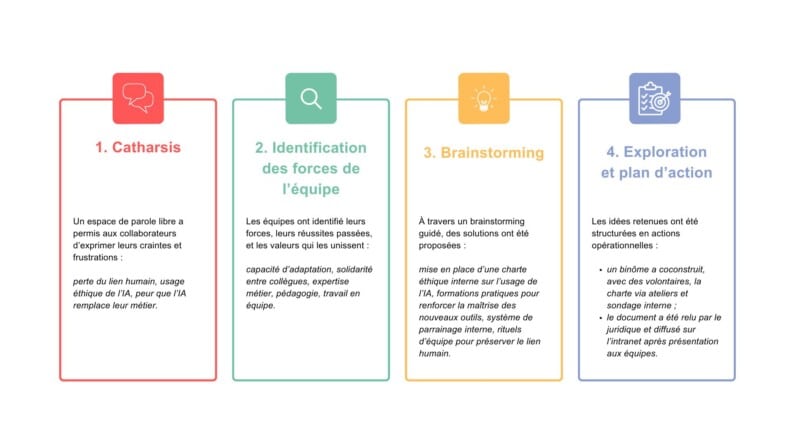
Here are the results after 4 months :
- Greater collective involvement
- Easing initial fears
- Feeling heard and considered
- Self-confidence and collective confidence
- Strengthened team cohesion
- Increased motivation
- Implementation of practical, operational and realistic solutions focused on the real needs of teams
Outsource interim management or mobilise in-house skills? Make the right choice for your transformation!
| Criteria | Outsource | Mobilising internal resources |
| Deadline | Fast, immediately operational | Longer, skills development required |
| Expertise | Experienced specialists, cutting-edge skills | Knowledge of company culture and processes |
| Flexibility | Targeted and temporary intervention | Less flexible, requires internal adjustments |
| Cost | Often higher initial investment | Optimising existing resources |
| Neutrality | Objectivity, a fresh look with no political stakes | Risk of bias or internal resistance |
| Cultural impact | Less culturally integrated | Strengthens commitment and corporate culture |
Outsourcing interim management: key figures
25 % of employees believe that their managers are genuinely competent to manage change (WTW, 2023).
46 % of organisations cite lack of time to develop skills as a major barrier to change (The State of Organizations, McKinsey, 2023).
These data underline the usefulness of external support in structuring the approach and overcoming the time constraint.
Mobilising internal staff: key figures
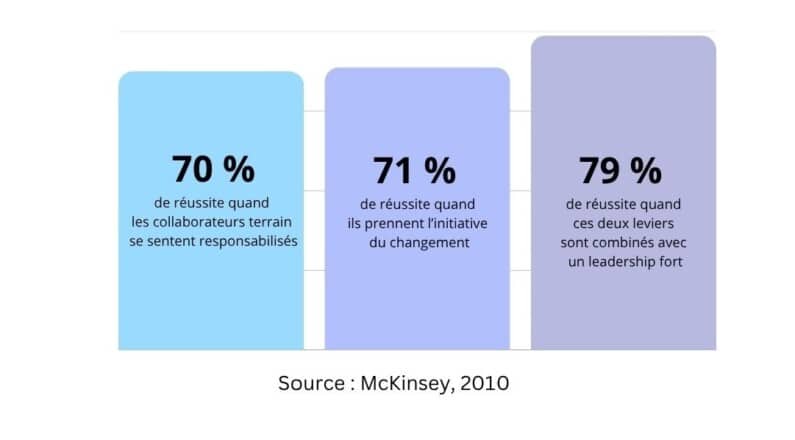
5 out of 8 of the most effective approaches to successful transformation involve employee engagement. McKinsey, 2010
Here are the actions implemented by companies in which at least 70 % of respondents stated that their company had achieved its transformation objectives:
| Actions involving employee commitment | 1 | The managers made sure that the staff on the ground felt responsible for the change. |
| 2 | Roles and responsibilities were clearly defined, enabling everyone to feel accountable for the results. | |
| 3 | The organisation was mobilised and energised by ongoing communication and involvement. | |
| 4 | Our best talents have been mobilised to lead the most critical aspects of the transformation. | |
| 5 | The leaders embodied the expected changes through their own behaviour. | |
| Actions not involving employee commitment | 6 | The transformation has been clearly structured, with stages that are easy to understand. |
| 7 | Clear, unambiguous indicators and milestones have been put in place to rigorously monitor progress and impact. | |
| 8 | The right information was available at the right time to enable managers to monitor the progress of the transformation and resolve any problems if necessary. |
How do you choose the right approach for your transformation?
The questions you need to ask yourself :
- First of all, what is the objective of the project? One-off transformation or cultural evolution?
- And do you have the necessary skills in-house?
- Does intervention require neutrality and objectivity?
- How quickly should change take place?
- What level of internal support is required?
- What is the allocated budget?
- What is the expected ROI?
- Finally, does the project present a high level of risk?
Choose outsourcing if your priority is speed, specialist expertise and neutrality.
Involve internal staff if the aim is long-term commitment, skills development and cultural anchoring.
Successful transformation often requires a combination of both.
Developing the essential skills needed to lead change
What skills are needed for effective transformation?
To support change, leaders and managers, whether at local, intermediate or strategic level, play a key role. They must guide, structure, reassure and mobilise. This requires them to develop a range of cognitive, organisational, emotional and relational skills.
- Behavioural skills: behavioural flexibility and adaptability
- Organisational skills: structuring, planning, implementation, steering, monitoring and adjustment
- Cognitive skills: ability to diagnose and assess complex situations, manage complexity and make decisions
- Intrapersonal skills: managing emotions and stress, self-confidence, resilience
- Interpersonal skills: active listening, empathy, team mobilisation and commitment, communication
The practical benefits of training
Individuals:
- First and foremost, it means building confidence in your ability to support change
- But we also need to understand resistance mechanisms (Kübler-Ross model, for example) so that we can put challenges into perspective, manage stress better and communicate clearly.
- It also means equipping ourselves with tools and methodologies for diagnosing, structuring and managing change
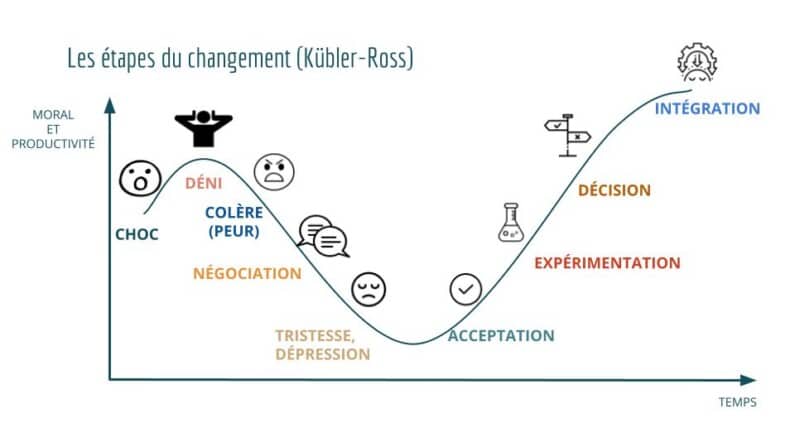
[Training]
Are you looking for effective strategies for anticipating and managing resistance, communicating your vision effectively and mobilising all stakeholders around shared objectives? Discover the training programme Change management, approach and tools. Using practical exercises and case studies, you will learn how to manage change with confidence and self-assurance, turning challenges into opportunities for progress.
The introduction of AI within organisations represents a real lever for innovation and performance. However, it requires appropriate change management to maximise the benefits and reduce resistance. But how can we anticipate the impact of AI on our businesses? How can we communicate effectively on the benefits of AI? And finally, how do you mobilise the key players to encourage buy-in and ownership? Training Supporting change as part of the introduction of AI gives you the keys to meeting these challenges.
Kotter, Prosci, Autissier... Which approaches and methods are best suited to your change issues? Find out during the training course Making a success of change: winning strategies.
From the design of the transformation project to its operational implementation, you will determine the target, define the relevant procedures and tools, overcome resistance and supervise implementation on the ground. Want to find out more? Then take a look at the training programme Managing a business transformation project.
Collectively :
- Strengthen team cohesion, support and mutual assistance through participative workshops that facilitate cooperation, create more relaxed forums for exchange, encourage buy-in and reinforce the collective dynamic.
Impact on the organisation :
- Reducing the risks associated with change
- Boosting overall performance
- Giving teams greater agility and the ability to support change
Key figures for interim management
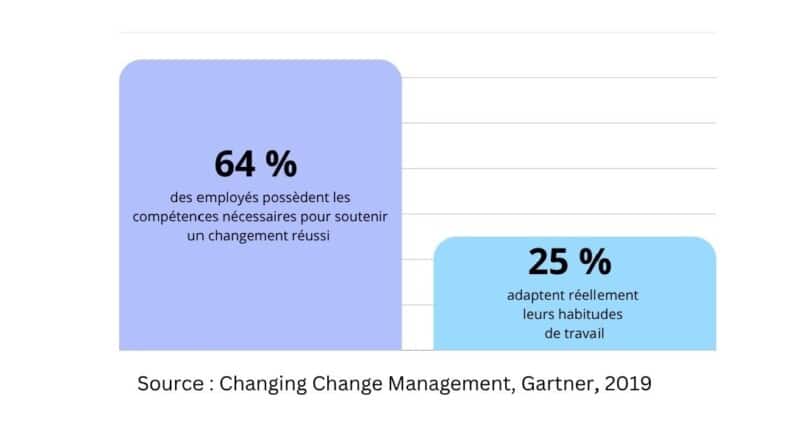
This shows the importance of developing practical, applicable skills.
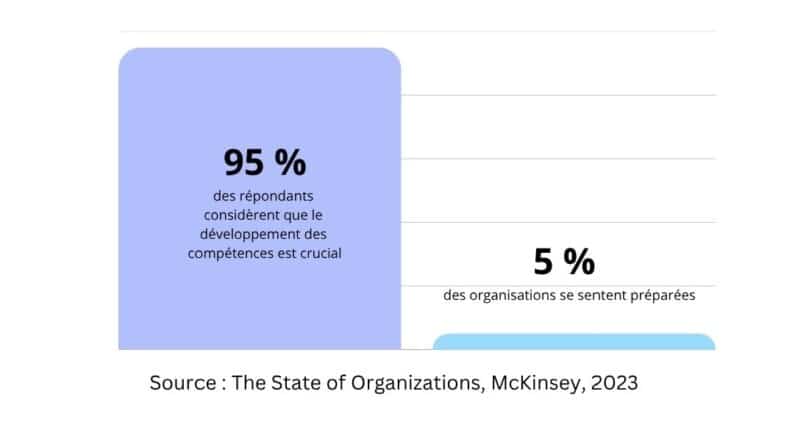
Hence the need to structure appropriate training pathways.
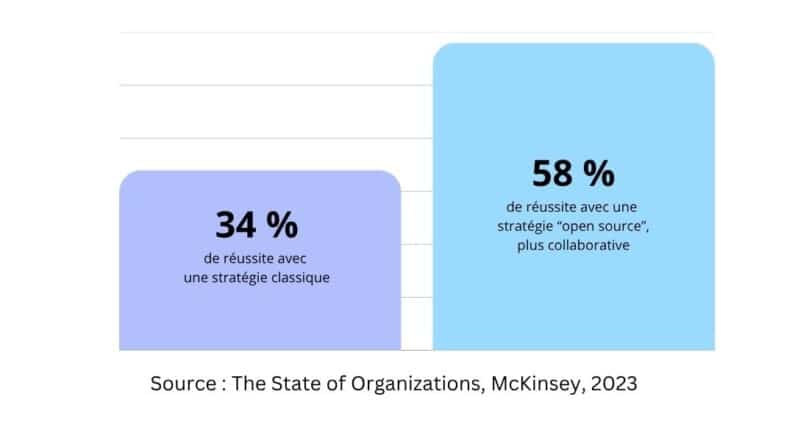
Collaborative change management strategies have increased the success rate from 34 % to 58 %, demonstrating the benefits of using participative tools.
[Testimonial]
"Before I took the change management training course, I approached this responsibility in a totally autonomous way, without any formal method or support. I put a lot of pressure on myself to do everything 'perfectly' from my point of view, without always taking into account that of the teams affected by the change. This sometimes led to misunderstandings or resistance that I struggled to anticipate or manage.
Thanks to the course, I discovered tried and tested methods and practical tools for effectively structuring a change process. In particular, I learnt how to define a support strategy, map out the stakeholders, plan the stages of transformation and identify the levers of support. This gave me a solid framework that I have continued to build on over the course of my projects. I also understood the importance of taking a step back before taking action. In other words, clarifying the issues and gathering the perceptions of the various stakeholders. It's a change in attitude, incorporating co-construction, that has transformed the way I manage projects.
I now make regular use of the six Bono hats. This collective thinking exercise encourages participants to explore a subject from different angles - emotional, logical, creative or critical. Playful, simple and structured, it helps to relax participants, who tend to focus on the hat and not on their fears. It's therefore very useful for de-dramatising deadlocked situations. I used it as part of a project to reorganise an industrial production line, where the teams were initially very resistant to change. The workshop freed people up to speak out and brought out their fears, as well as the ideas and resources of the team. It was a real turning point in terms of support for the project".
Anonymous - Project Director
In conclusion, in the face of constant change, the survival of organisations depends on their ability to support change by mobilising all the company's resources, both internal and external. Interim management, mobilising teams and developing skills: there are several solutions to help you not only adapt... but thrive.





